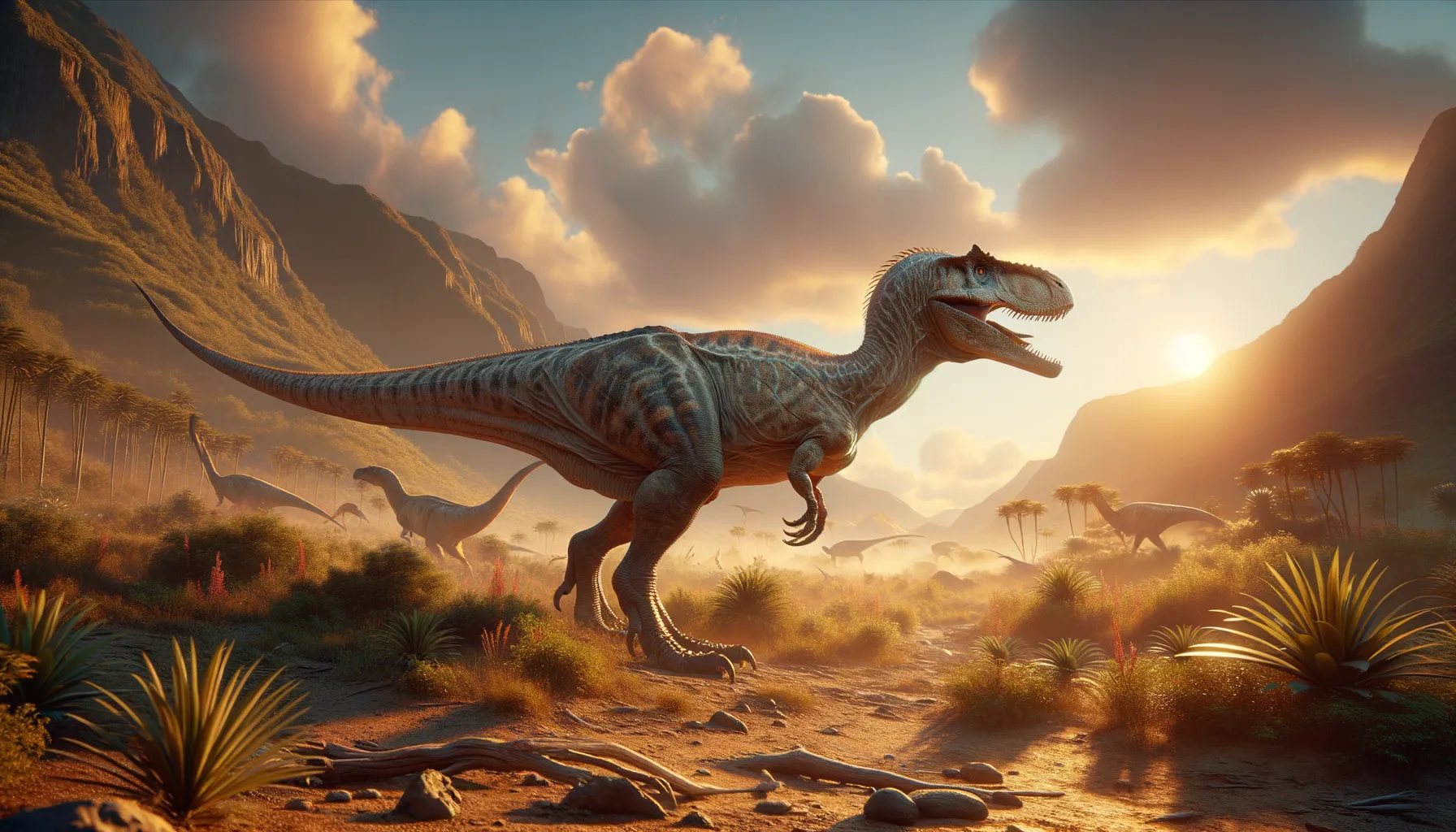
Sphenosaurus
Unlocking mysteries of the Triassic era.
Period
Triassic
Length
Around 3 meters in length.
Height
Stood about 1.5 meters tall.
Weight
Approximately 200 kilograms.
Sphenosaurus is a lesser-known dinosaur from the Triassic period. With limited fossil evidence, this creature remains somewhat of a mystery, characterized by its unique body structure and potentially agile movement. It is presumed to have been a predator, but the details of its diet and hunting strategies are largely speculative. Its discovery provides important insights into early dinosaur evolution and ecological dynamics of its time.
Diet
Sphenosaurus is believed to have been a carnivore, feeding on smaller vertebrates. Its diet likely included early amphibians and reptiles, which were abundant during its time.
Hunting
With limited evidence, its hunting strategies are not well understood. However, it may have relied on stealth and quick bursts of speed to catch prey, possibly ambushing with precision.
Environmental challenges
The Triassic period was a time of significant environmental change, with continental drift affecting climate and ecosystems. Sphenosaurus had to adapt to fluctuating temperatures and evolving landscapes. Competition for resources with other predators would have posed another challenge during its time.
Speed
Details about Sphenosaurus's speed are currently unclear due to limited fossil evidence.
Lifespan
Estimates suggest it lived for several decades.
First discovery
Discovered in the early 20th century in Europe.
Fun Facts
- Sphenosaurus was not an actual dinosaur but rather an ancient reptile that lived during the Permian period, long before most dinosaurs.
- This reptile is often mistaken for a dinosaur because of its name, which means 'wedge lizard.'
- Unlike true dinosaurs, Sphenosaurus likely lived in swampy areas and had a diet consisting of plants.
- Fossils of Sphenosaurus have primarily been found in Germany, giving researchers insights into its ancient habitat.
- Sphenosaurus had a unique, elongated body and a short neck, making it look quite different from the typical image of dinosaurs.
- Its discovery helped bridge the understanding between early terrestrial reptiles and the evolution of later giants like dinosaurs.
- Sphenosaurus showcases the incredible diversity of life forms that existed even before the age of dinosaurs.
Growth and Development
Like other early dinosaurs, Sphenosaurus likely went through rapid growth phases during its early years. Fossil evidence, although sparse, suggests a possible exponential growth pattern, essential for survival in predator-filled environments.
Habitat
Living in dry, semi-arid regions, Sphenosaurus thrived in diverse environments, from open plains to forested areas. These habitats provided both prey and protection, crucial for its survival.
Interaction with other species
Sphenosaurus likely interacted with a variety of species, both as a predator and competitor. Co-existing with other dinosaurs and reptiles, it played a role within its ecological niche. Competition with contemporaneous carnivores would have shaped its survival strategies.
Natural lifespan
Its natural lifespan is believed to have spanned several decades.
Reproduction
Sphenosaurus likely reproduced through egg-laying, a typical characteristic of early dinosaurs. Parental care is speculative, with some evidence suggesting the guarding of nests from predators.
Social behaviour
The social behavior of Sphenosaurus remains uncertain, with evidence hinting at both solitary and pack behaviors. Interaction patterns were likely influenced by environmental conditions and resource availability.
Fossil locations
Fossils primarily found in Northern European regions indicate a limited geographical range. The scarcity of well-preserved specimens limits our understanding of its full distribution and diversification.
